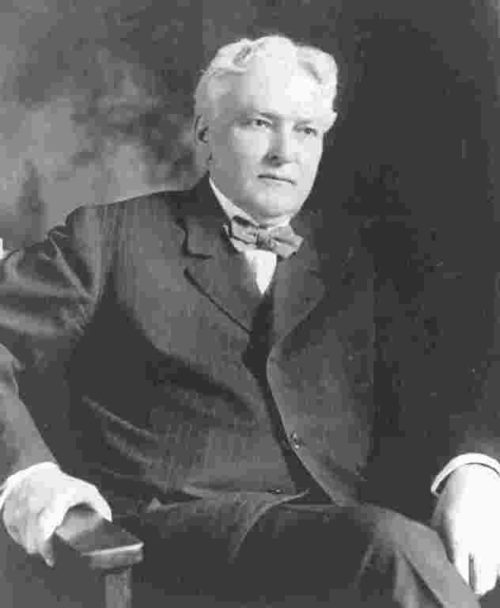
Fort Dodge poet Charles Blanden’s first book of poetry, “Tancred’s Daughter and Other Poems,” was published in 1889. He also served as the town’s mayor from 1887 to 1889.
By Alan F. Nelson
If he wasn’t enigmatic, he was at least complicated. There were very few characters out of the frontier west who followed a path similar to that of Charles Granger Blanden.
On the one hand, he was a shrewd businessman capable of standing up to the graft of big city bureaucrats. On the other, he was a prolific poet compared by serious critics to the likes of Edna St. Vincent Millay and Robert Frost. Forty years after leaving Fort Dodge, the town where he grew to manhood and began his career, Blanden donated enough money during the Great Depression to build the “Gem of the Cornfields” — the Blanden Memorial Art Museum in Fort Dodge.
Blanden was born near Burlington, N.Y., on Jan. 19, 1857, and moved with his parents to McHenry County, Ill. His father, Granger Blanden, was a grain dealer and died in 1861, leaving Anna (Tiffany) Blanden with Charles and his younger brother, Alonzo. Granger Blanden’s brothers, Leander, Zeno and Alonzo Blanden, helped Anna Blanden with raising the family. Col. Leander Blanden (Charles’ uncle) had distinguished himself in the American Civil War and mustered out as a brevet brigadier general. The colonel owned a 3,300-acre cattle ranch northwest of Manson. The tiny Iowa community of Blanden emerged just north of present-day Kalso Prairie. The town no longer exists, but remains on some maps. Leander and Zeno Blanden are buried in Fort Dodge’s picturesque Oakland Cemetery.
The colonel came to Fort Dodge just after the Civil War from Illinois in 1867. Anna Blanden and the boys followed from Marengo, Ill., in 1874. Charles Blanden, or “Charley” as he was called, clerked at the First National Bank where his uncle Leander Blanden had an ownership interest. Charley rose to the position of head cashier. This experience would serve him well in the future.
Brother Alonzo’s real name was Leander Alonzo Blanden, but he was usually called Lonnie or Lon. Lonnie Blanden was a store clerk while living in Fort Dodge. After he left town, he became an acclaimed Shakespearean actor in New York and Pennsylvania.
The Rev. William Mills brought his family to town from Ottumwa in 1876, where they had come from Connecticut. He was the new rector at St. Mark’s Episcopal Church. His daughter, Sarah Elizabeth (Lizzie), became a respected schoolteacher in Fort Dodge.
In 1884 Charles Blanden and Lizzie were wed in Ottumwa at the old St. Mary’s Episcopal Church where her father had been reassigned. The Ottumwa Courier reported on the September evening wedding:
“White table clothes had been spread on the chancel steps and altar platform, also over the chancel window, and they were wreathed with woodbine producing a very pleasing effect. On either side of the window were the letters ‘M.’ and ‘B.’ handsomely formed of ferns … Above the place where the bride and groom were to stand during the ceremony was a large floral umbrella.” The two bridesmaids were sisters of Elisabeth. There were no groomsmen.
A reception was held at the Mills’ home “in the eastern suburbs of the city.” At 11 p.m. that evening the couple headed back to Fort Dodge on the Rock Island Line. It was a love affair that lasted as long as they both lived.
Charles Blanden became Fort Dodge’s youngest mayor in 1887. His two-year term was highlighted by a cow ordinance controversy that divided the townspeople over the issue of whether to allow cows to roam free in the business district or banish them to the outskirts.
He wrote his first book of poetry as a resident of Fort Dodge as “Tancred’s Daughter and Other Poems” was published in 1889. With a substantial job opportunity and aspirations of furthering his writing career, Blanden and his wife moved to the Chicago, Ill., area in 1890. The J. Rhodes Co. had offered him a position as manager of a major “loop” building — the nine-story Postal Telegraph Building was also known as the Rialto Building. He held his job there until he retired in 1922. This was a position that offered him many business advantages to begin his accumulation of wealth.
TO READ THE ENTIRE STORY AND OTHER FASCINATING STORIES ABOUT IOWA HISTORY, subscribe to Iowa History Journal.
